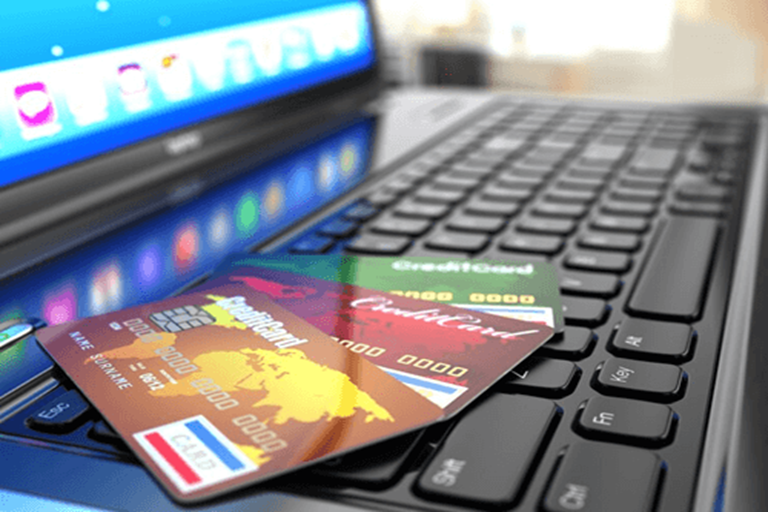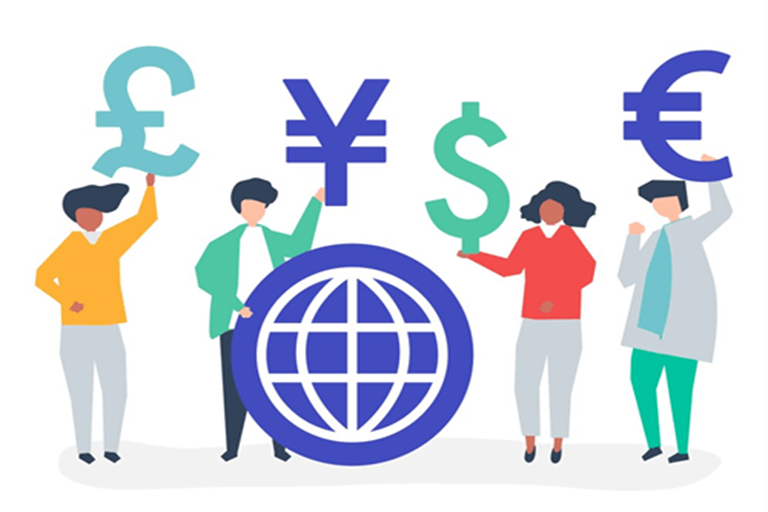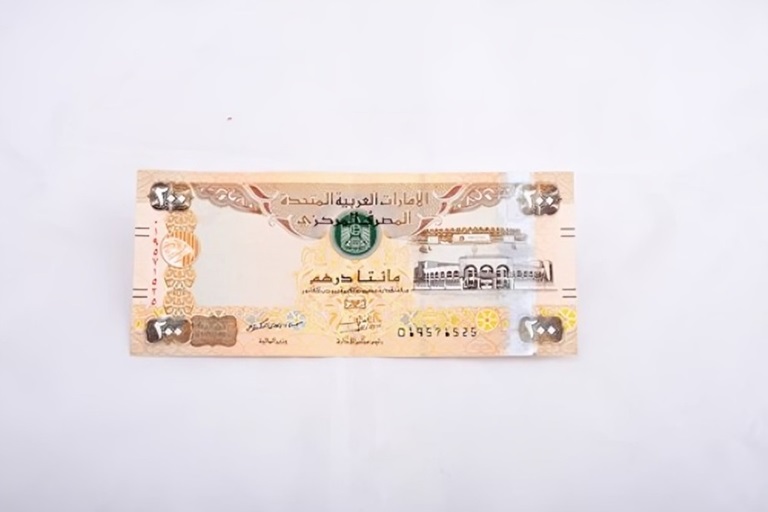
Understanding Foreign Transaction Fees and How to Avoid Them
Table of contents
When travelling abroad or shopping online from international websites, one cost often overlooked is foreign transaction fees. These fees, while seemingly small, can add up quickly, increasing the total cost of purchases made in a foreign currency. Understanding foreign transaction fees and learning how to avoid them can save you significant money in the long run, especially for frequent travellers and avid online shoppers.
This comprehensive guide will break down foreign transaction fees, how they work, and actionable strategies to minimise or avoid them altogether.
What Are Foreign Transaction Fees?
A foreign transaction fee is a charge applied by your credit card issuer, bank, or payment processor when you make a purchase or withdrawal in a foreign currency. It typically consists of two components:
1. Currency Conversion Fee: Charged for converting the transaction amount into your home currency.
2. Issuer Fee: Imposed by the card issuer or bank for processing international transactions.
These fees generally range between 1% and 4% of the total transaction amount, depending on the financial institution and the type of card you use.
How Do Foreign Transaction Fees Work?
When you make a purchase in a foreign currency, the following steps occur:
1. The merchant’s bank processes the transaction in their local currency.
2. The payment network (e.g., Visa, Mastercard, or American Express) converts the amount to your home currency, applying a currency conversion fee.
3. Your card issuer adds its own processing fee, finalising the total charge on your account.
For instance, if you spend $100 abroad and your card has a 3% foreign transaction fee, you will pay $103.
When Are Foreign Transaction Fees Applied?
These fees are not limited to travel and can be incurred in the following situations:
• International Travel: Using your card for purchases or cash withdrawals abroad.
• Online Shopping: Buying products or services from foreign merchants.
• Subscriptions: Paying for international streaming services or apps priced in a foreign currency.
• Dynamic Currency Conversion (DCC): Opting to pay in your home currency rather than the local currency when using your card abroad.
Why Do Foreign Transaction Fees Exist?
Foreign transaction fees cover the costs associated with currency conversion and international payment processing. They are also a source of revenue for banks and card issuers. While these fees can seem inconvenient, they compensate institutions for providing seamless global access to your funds.
How to Avoid Foreign Transaction Fees
1. Use a No-Foreign-Transaction-Fee Card
The simplest way to avoid these fees is to use a credit or debit card designed for international use. Many banks and financial institutions offer cards with zero foreign transaction fees. These cards are particularly beneficial for frequent travellers and international shoppers.
Examples of No-Fee Cards:
• Chase Sapphire Preferred (US)
• Revolut or Monzo (UK)
• SBI Global International Debit Card (India)
2. Opt for a Forex Card
Prepaid Forex Cards are specifically designed for international travel. These cards allow you to load multiple foreign currencies in advance at competitive exchange rates, eliminating conversion fees for transactions made in the loaded currencies.
Benefits of Forex Cards:
• No currency conversion fees.
• Fixed exchange rates at the time of loading.
• Widely accepted at ATMs and POS terminals.
3. Pay in the Local Currency
When presented with the option to pay in your home currency or the local currency while abroad, always choose the local currency. Paying in your home currency triggers dynamic currency conversion (DCC), which often comes with higher conversion fees and unfavourable rates.
4. Use Online Payment Platforms
Platforms like PayPal and Wise (formerly TransferWise) offer competitive exchange rates and lower fees for international transactions. They are especially useful for online purchases or paying international service providers.
5. Withdraw Cash Wisely
If you need cash, withdraw larger amounts at once to minimise ATM fees. Look for partner ATMs or those that explicitly state “no fees” for your card. Some banks even reimburse foreign ATM fees for specific accounts.
6. Avoid Dynamic Currency Conversion (DCC)
Dynamic currency conversion allows you to see the amount charged in your home currency at the point of sale. However, this convenience comes at a premium. Decline DCC whenever offered and pay in the local currency instead.
7. Choose Banks with Global Alliances
Some banks have partnerships with international institutions, allowing fee-free transactions at partner ATMs. Check if your bank offers this benefit before travelling.
Tips for Reducing Foreign Transaction Fees
1. Compare Exchange Rates: Monitor real-time exchange rates and make larger transactions when rates are favourable. Many apps and websites offer live currency exchange tools to help you time your purchases.
2. Bundle Transactions: Instead of making multiple small transactions, consolidate your spending into fewer, larger purchases to reduce the cumulative impact of transaction fees.
3. Inform Your Bank Before Travelling: Notify your bank or card issuer about your travel plans to avoid having your card flagged for suspicious activity.
4. Track Fees and Statements: Regularly review your bank statements to monitor fees charged and ensure there are no discrepancies. If you notice any unexpected charges, contact your bank immediately.
Common Myths About Foreign Transaction Fees
Myth 1: Debit Cards Don’t Charge Foreign Transaction Fees
Fact: While debit cards may have lower fees than credit cards, they are not fee-free unless specifically stated by your bank.
Myth 2: Dynamic Currency Conversion Saves Money
Fact: Paying in your home currency via DCC often incurs higher fees and less favourable exchange rates.
Myth 3: Forex Cards Are Only for Travel
Fact: Forex Cards can be used for any international transaction, including online purchases in foreign currencies.
Hidden Costs Beyond Foreign Transaction Fees
In addition to transaction fees, other costs to be aware of include:
• ATM Fees: Fees for withdrawing cash from international ATMs.
• Markup on Exchange Rates: Some institutions add a markup to the base exchange rate, increasing your overall cost.
• Service Charges: Additional fees for certain payment methods or account types.
Foreign transaction fees are an inevitable part of international spending, but with careful planning and the right tools, they can be minimised or avoided entirely. By opting for no-foreign-transaction-fee cards, using Forex Cards, and paying in local currencies, you can enjoy seamless global transactions without worrying about unnecessary costs.
If planning your next getaway, consider Thomas Cook’s expertly curated holiday packages that cater specifically to Indian travellers. With Thomas Cook, you can explore new destinations without worrying about excessive fees or travel logistics, making your travel experience as smooth as possible.
Whether you’re a frequent traveller, an expat, or an online shopper, understanding the nuances of foreign transaction fees empowers you to make smarter financial decisions. By implementing the strategies outlined in this guide, you can keep more of your hard-earned money in your pocket, no matter where in the world you are.
Table of contents
Our Forex Offerings
Trending blogs for you
Recommended Articles for you
15+ Places to Visit in Ooty – The Queen Of Hill Stations
Reading Time: 9 minutes 0 0 How does this sound to you: bright green soothing slopes, mystical pathways, and clouds that kiss your hair? Ooty is replete with such immense beauty and has enough activities and elements to keep every traveler happy and satisfied.One […]
PAR: Hong Kong Visa Myths Busted
Reading Time: 6 minutes 0 0 Hong Kong, the Special Administrative Region of the People’s Republic of China (PRC), is increasingly becoming one of the most sought-after international holiday destinations for Indian tourists. This has something to do with its vibrant culture, iconic skyline, […]
Choosing the Best Forex Card for Your Travel Needs
Reading Time: 9 minutes 0 0 Travelling abroad can be an exciting adventure, but managing your finances while on a trip can sometimes be challenging. When visiting different countries, paying in local currency is essential to avoid the pitfalls of unfavourable exchange rates and […]
Top Zero Markup Credit Cards for Forex Transactions in India in 2025
Reading Time: 9 minutes 0 0 Traveling internationally often comes with various expenses, and one of the most significant is currency conversion. Traditional methods, such as exchanging cash or using credit/debit cards, usually involve hidden charges, hefty conversion fees, and unfavourable exchange rates. Enter […]
Why You Should Consider Trading Forex: 12 Key Insights
Reading Time: 5 minutes 0 0 Foreign exchange trading, commonly known as forex trading, has grown to become one of the most popular forms of trading worldwide. With a daily trading volume exceeding $7 trillion, it represents the largest and most liquid financial market. […]
Key Differences Between Regular Bank Accounts and Overseas Bank Accounts
Reading Time: 5 minutes 0 0 In a globalized world where people frequently travel, migrate, or conduct business across borders, understanding the distinction between regular bank accounts and overseas bank accounts is crucial. While both serve the primary purpose of storing and managing money, […]
Doorstep Forex Delivery and more by Thomas Cook
Reading Time: 4 minutes 0 0 Foreign Exchange today is one of the basic requirements for not only business travellers but tourists as well and getting a Doorstep Forex Delivery when you are really running late is truly a blessing! This is where reputed […]
Top 50 Famous Beaches in Goa Including the Ones You Don’t Know
Reading Time: 9 minutes -117 -178 Although it is one of the smallest states in India, Goa offers an abundance of beautiful beaches. Our Goa tour packages will be perfect for a much-needed break from our hectic lives. So here’s a list of Goa beaches […]
Hotter Than Hot: Exploring India’s Hottest Destinations
Reading Time: 10 minutes 0 0 Exploring the hottest places in India reveals more than just extreme temperatures; it uncovers a rich tapestry of cultures, intriguing histories, and breathtaking landscapes. From the arid deserts of Rajasthan to the blazing plains of Uttar Pradesh, each […]
10 Best Places To Visit In July In India On A Budget
Reading Time: 11 minutes 0 0 July, with its refreshing monsoon showers, transforms India into a vibrant tapestry of lush greenery and spectacular landscapes. For those who wish to explore the beauty of this transformation without causing a dent in their wallets, there are […]
Top 10 Coldest Places In India You Must Visit This Winter
Reading Time: 8 minutes 0 0 As winter approaches, the quest for crisp air and snow-covered landscapes draws many away from India’s typically mild winters. Embrace the season by venturing into the country’s coldest regions, where each destination offers a unique blend of natural […]
12 Best Places To Visit In November In India In 2025
Reading Time: 8 minutes 0 0 November is a month of vibrant transitions in India, offering an array of travel experiences from the cool Himalayan foothills to the warm beaches of the south. If you’re planning your travel itinerary for November 2024, India presents […]
10 Stunning Places To Visit In October In India To Experience the Autumn
Reading Time: 11 minutes 0 0 10 Stunning Places To Visit In October In India To Experience the Autumn October marks a magical time in India when the monsoon rains have ceased, and the landscape bursts with vibrant colours, making it an outstanding month […]
September Travel Guide – 8 Offbeat Places to Visit in September in India
Reading Time: 4 minutes 0 0 As the monsoon starts to wane, September brings forth the vibrant palette of India with its pleasant climate and colourful festivals, making it an ideal time for offbeat travels. This guide delves into eight unique destinations across India […]
Explore Top Places to Visit in India this August
Reading Time: 11 minutes 0 0 August in India isn’t just about monsoon rains; it’s a month that opens up an array of travel possibilities across the country. From the cool hill stations to the less crowded beaches, the best places to visit in […]
10 Best Places to Visit in November Outside India on a Budget
Reading Time: 8 minutes 0 0 As November rolls in with its mild weather and the promise of new experiences, many Indian travellers start looking for the perfect overseas getaway that doesn’t break the bank. If you’re planning to explore new cultures, cuisines, and […]
Top 10 Best Countries to Visit in October for Stunning Autumn Views
Reading Time: 9 minutes 0 0 Top 10 Best Countries to Visit in October for Stunning Autumn Views As October rolls in, so does the magical palette of autumn, transforming the landscapes of various countries into a vivid mosaic of colours. The crisp air […]
A Simple Explanation of Currency Pairs for Forex Beginners
Reading Time: 4 minutes 0 0 The foreign exchange market, or Forex, is the largest financial market in the world, with trillions of dollars traded daily. For beginners, understanding the basics is crucial to navigating this dynamic market. One of the most fundamental concepts […]
Which Currency is Best to Use in Dubai?
Reading Time: 4 minutes 0 0 Dubai, one of the world’s most vibrant and luxurious destinations, attracts millions of tourists and business travellers each year. Known for its towering skyscrapers, world-class shopping malls, and rich cultural experiences, Dubai’s allure often raises a common question […]
Step-by-Step Guide to Reloading and Unloading Your Forex Card
Reading Time: 5 minutes 0 0 A Forex card is an indispensable tool for international travellers, offering a secure, convenient, and cost-effective way to carry foreign currency. Whether you are a frequent flyer, a student studying abroad, or simply on holiday, a Forex card […]
 18002099100
18002099100




















